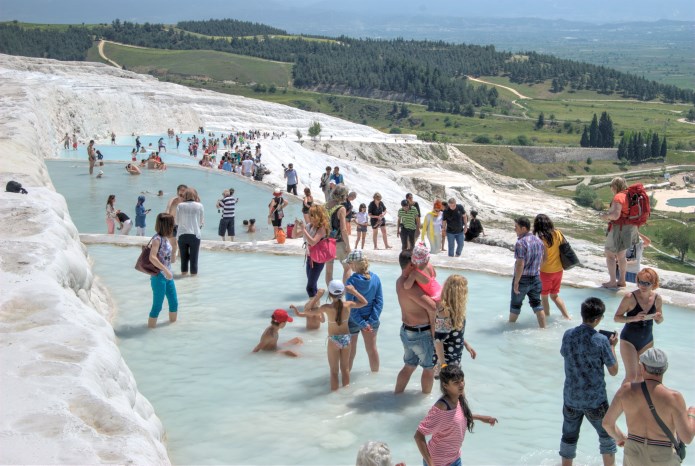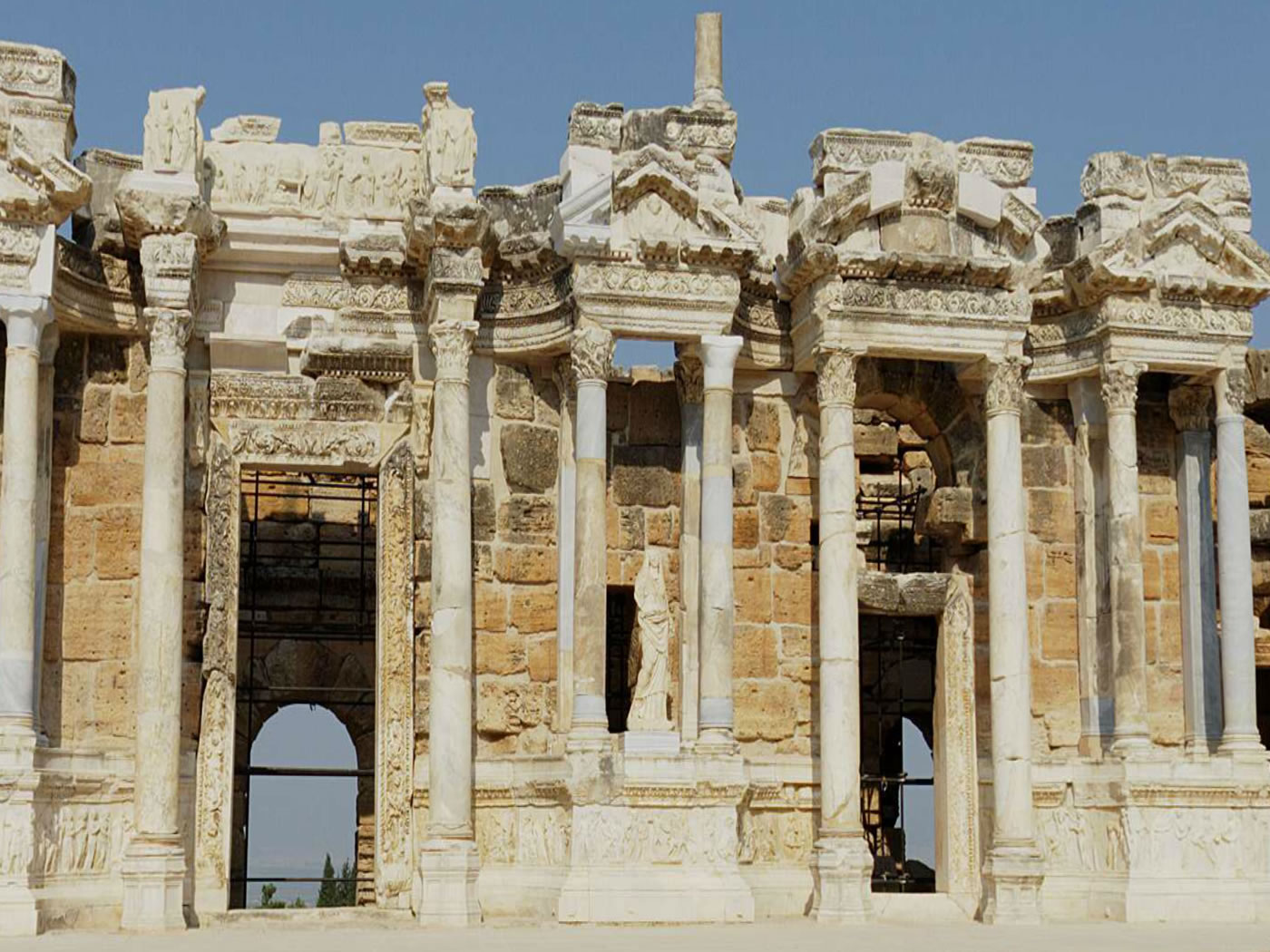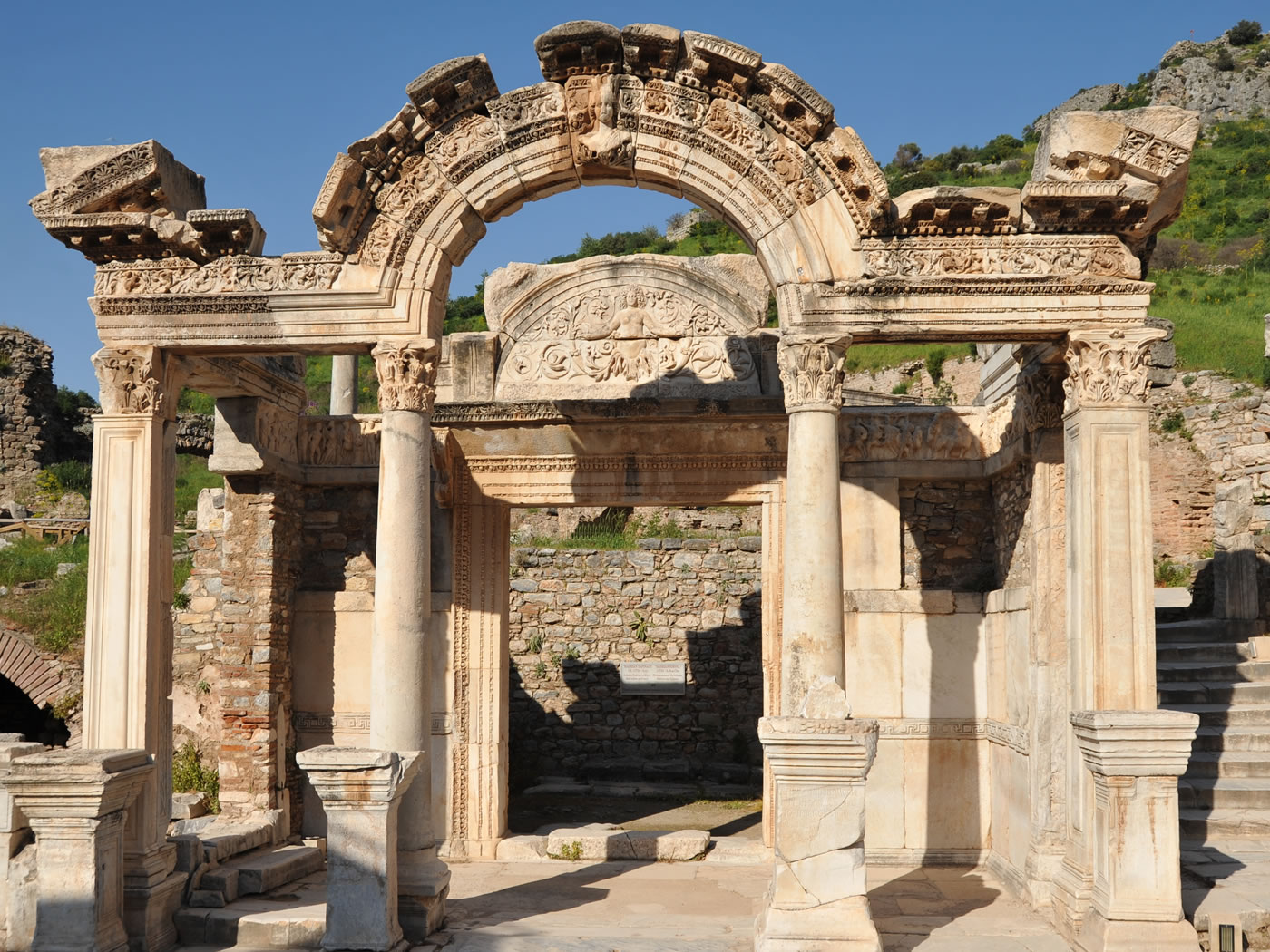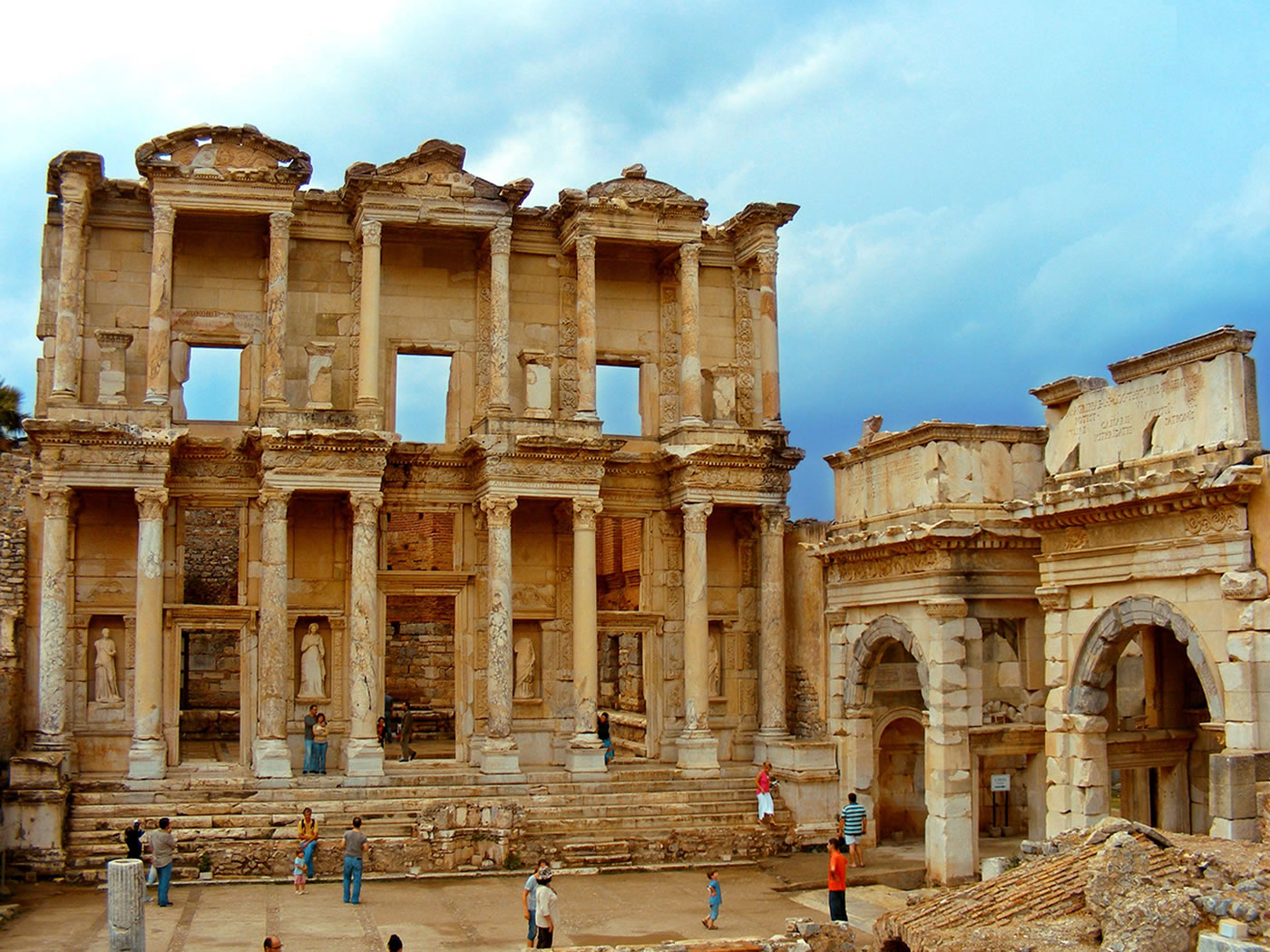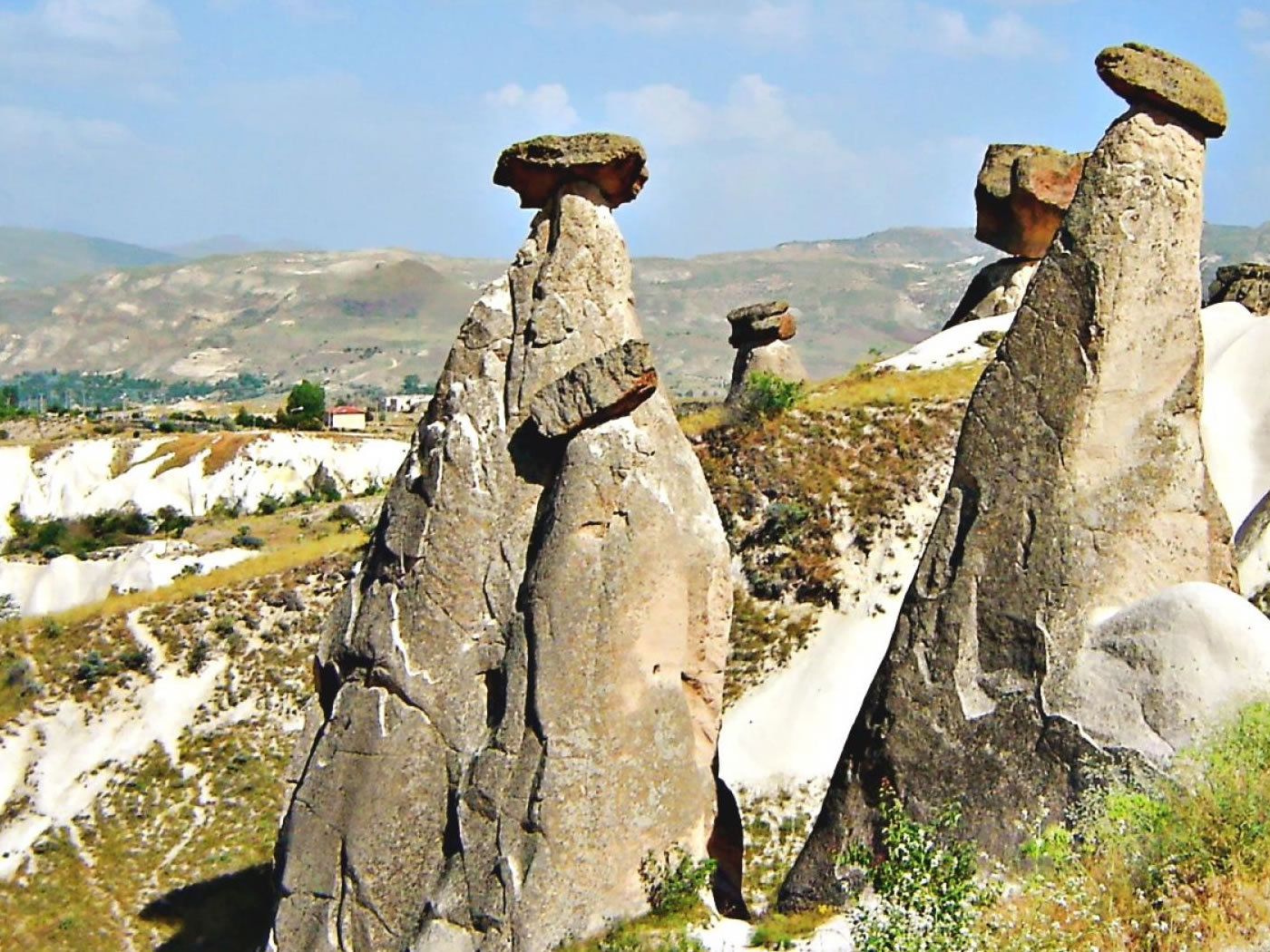4-Day Turkey's Highlights: Cappadocia, Pamukkale and Ephesus Tour – From Istanbul
Discover Turkey’s most iconic destinations in just four days — combining fairy chimneys, thermal wonders, and ancient ruins with seamless travel from Istanbul.
Overview
Explore Turkey’s top highlights in 4 days! Visit the magical landscapes of Cappadocia, the stunning travertine terraces of Pamukkale, and the ancient city of Ephesus. Enjoy guided tours, domestic flights, comfortable hotels, and authentic local meals. Perfect for a memorable and hassle-free Turkish adventure.
Tour Snapshot
Duration: 4 Days / 3 Nights
Destinations Covered: Cappadocia, Pamukkale, Hierapolis, Ephesus, Virgin Mary House, Şirince Village
Departure: Daily departures from Istanbul
Transportation: Domestic Flights, Comfortable A/C Vehicles, Overnight Bus
Accommodation: Boutique Cave Hotels in Cappadocia, Seaside Hotels in Kusadasi (or optional overnight bus)
Tour Style: Small Group, Fully Guided, Historical & Cultural Discovery
Inclusions: Professional English-speaking guide, Entrance fees, Domestic flights, Breakfasts & Lunches, Hotel Transfers
Highlights:
Explore the unique fairy chimneys and Goreme Open-Air Museum in magical Cappadocia
Visit the otherworldly Pamukkale Travertines and ancient ruins of Hierapolis
Walk through history in the Ancient City of Ephesus, one of the best-preserved Roman sites
Discover the House of Virgin Mary and charming Şirince village
Ready to Discover Turkey's Timeless Wonders? Book Your Spot Now Before It Sells Out!
Experience the perfect blend of nature, history, and culture – with limited seats available, secure your unforgettable journey today.
Itinerary
Day 1: Istanbul ➝ Flight to Cappadocia & North Cappadocia Tour
Meals: Lunch
Overnight: Cappadocia (Hotel)
04:30 – 05:00 AM: Hotel pickup in Istanbul & transfer to airport.
07:00 AM: Flight to Kayseri or Nevsehir.
08:00 AM: Arrival in Cappadocia & transfer to join North Cappadocia Tour.
Sightseeing Highlights
Devrent Valley: Surreal rock formations and animal-shaped fairy chimneys.
Pasabag (Monk’s Valley): Iconic mushroom-shaped fairy chimneys.
Avanos: Traditional pottery village along the Kızılırmak River.
Göreme Open-Air Museum: UNESCO World Heritage rock-cut churches & frescoes.
Uçhisar Castle: Panoramic view from Cappadocia's highest natural point.
16:30 PM: Tour ends, transfer to your cave hotel.
Evening at leisure.
Day 2: South Cappadocia Tour ➝ Overnight Bus to Pamukkale
Meals: Breakfast, Lunch
Overnight: Comfortable bus ride to Pamukkale (Optional flight available)
Sightseeing Highlights
Red Valley: Vibrant colored rock formations ideal for hiking.
Çavuşin Village: Old Greek houses and rock dwellings.
Pigeon Valley: Scenic valley with ancient pigeon houses carved into rocks.
Kaymaklı Underground City: A fascinating labyrinth of tunnels and rooms.
Ortahisar Castle: Stone fortress offering panoramic views.
16:00 PM: End of tour & return to hotel.
19:30 PM: Board overnight intercity bus to Pamukkale.
Optional Flight: Fly to Izmir after the tour (+135 EUR pp), overnight in Kusadasi.
Day 3: Pamukkale & Hierapolis Tour ➝ Kusadasi
Meals: Lunch
Overnight: Kusadasi (Hotel)
Sightseeing Highlights
16:00 PM: Transfer to Kusadasi by private vehicle.
19:00 PM: Check-in to seaside hotel in Kusadasi.
Day 4: Ephesus Ancient City Tour ➝ Fly Back to Istanbul
Meals: Breakfast, Lunch
Tour Ends in Istanbul
Sightseeing Highlights
Ephesus Ancient City:
Celsus Library, Hadrian Temple, Trajan Fountain
Great Theater: With capacity of 25,000 seats
Marble Street & Harbor Road
Isa Bey Mosque: 14th-century Seljuk architecture.
Temple of Artemis: One of the Seven Wonders of the Ancient World.
House of Virgin Mary: Sacred pilgrimage site.
Şirince Village: Quaint Greek-style village known for fruit wines.
16:00 PM: Transfer to Izmir Airport.
18:00 PM: Flight to Istanbul.
20:30 PM: Arrival & transfer to your hotel in Istanbul.
Tour concludes.
Notes
Cappadocia – Key Attractions and Highlights
Dervent Valley (Imagination Valley)
Famous for its whimsical rock formations resembling animals and shapes, Dervent Valley sparks visitors' imagination with its naturally sculpted fairy chimneys.
Pasabag (Monks Valley)
Known for iconic three-headed fairy chimneys, Pasabag was a retreat for monks seeking solitude in cave dwellings carved into the rocks, offering a surreal and spiritual atmosphere.
Avanos
Located by the Kızılırmak River, Avanos is famous for its ancient pottery tradition dating back to the Hittites. Visitors can observe skilled artisans or try pottery-making themselves.
Göreme Open Air Museum
A UNESCO World Heritage Site featuring rock-hewn churches, chapels, and frescoes carved into volcanic rock, offering a vivid insight into early Christian life in Cappadocia.
Uçhisar Castle
The highest point in Cappadocia, Uçhisar Castle offers panoramic views of surrounding valleys. This natural rock fortress was historically used as a watchtower and refuge.
Red Valley
Known for its stunning red-hued rock formations and scenic hiking trails, Red Valley is especially captivating at sunset, offering some of the most picturesque views in the region.
Çavuşin Village
One of the oldest settlements, famous for its rock-cut dwellings and the historic Church of St. John the Baptist perched on a cliffside.
Pigeon Valley (Great Pigeon House)
A peaceful valley dotted with ancient pigeon houses carved into cliffs, historically used for fertilizer and communication. A popular spot for walking and photography.
Kaymakli Underground City
An extensive subterranean city used by early Christians to escape invasions. It features tunnels, living quarters, kitchens, and wineries spread over multiple underground levels.
Ortahisar Castle
A towering natural rock fortress in the center of Ortahisar town, providing panoramic views and insight into Cappadocia’s unique troglodyte architecture and defense history.
Hierapolis (Ancient City) – Must-See Highlights
Necropolis
One of Turkey’s largest ancient cemeteries with over 1,200 tombs and sarcophagi from Hellenistic, Roman, and early Christian eras.
Roman Baths
A grand bathing complex partially restored and integrated into the Hierapolis Archaeology Museum.
Domitian Gate
A magnificent triple-arched gateway honoring Emperor Domitian, marking the entrance to the city’s main street.
Latrina
Ancient public toilets demonstrating advanced urban planning and social life during Roman Hierapolis.
Frontinus Street
The city’s main colonnaded avenue lined with shops and administrative buildings, connecting Domitian Gate to the Agora.
Agora
The social and commercial heart of Hierapolis, where markets and public gatherings once took place.
Byzantium Gate
An eastern entrance added during Byzantine times for city fortification and control.
Triton Fountain
A Roman fountain decorated with mythological sea creatures, part of the ancient water distribution system and a public focal point.
Cathedral
An early Christian church representing Hierapolis’s role in spreading Christianity.
Temple of Apollo
Dedicated to the god of prophecy and healing, located near the sacred Plutonium cave.
Plutonium
A mysterious sacred cave believed to be an entrance to the underworld, emitting toxic gases used for ancient religious rituals.
Theater
A well-preserved Roman theater seating over 12,000 spectators, showcasing detailed stage reliefs and excellent acoustics.
Pamukkale (Calcium Terraces)
Iconic white travertine terraces formed by mineral-rich thermal waters cascading down hillsides — one of Turkey’s most photographed natural wonders and UNESCO World Heritage Site.
Cleopatra’s Antique Pool
A warm thermal pool where visitors can swim among submerged ancient columns, said to be a gift from Marc Antony to Cleopatra (entrance fee applies).
Ephesus Ancient City & Surroundings – Key Attractions
Ephesus Ancient City Ruins
One of the world’s best-preserved Greco-Roman cities offering a unique glimpse into ancient urban life with streets, temples, theaters, and public buildings.
Celsus Library
An iconic architectural marvel that once housed over 12,000 scrolls, also serving as a monumental tomb for Roman senator Tiberius Julius Celsus.
Temple of Hadrian
A beautifully adorned Roman temple known for its intricate reliefs and curved archway.
Trajan Fountain
A grand fountain complex honoring Emperor Trajan, showcasing the city’s advanced water system.
Historical Marble Street
A polished marble-paved road connecting key city areas, bustling with merchants and citizens in ancient times.
Great Theater
A massive Roman theater seating 25,000 people, historically hosting gladiator games, concerts, and political events; still used for performances today.
Isa Bey Mosque
Built in 1375, this Seljuk mosque blends Islamic architecture with classical columns from nearby ruins, reflecting centuries of cultural fusion.
Shrine of the Mother Mary
A peaceful Christian pilgrimage site believed to be the Virgin Mary’s final home, located on a hill overlooking Ephesus.
Temple of Artemis
Once one of the Seven Wonders of the Ancient World, this grand temple dedicated to the goddess of fertility is now represented by a single standing column.
Şirince Village
A charming hillside village famous for its traditional Greek-Turkish architecture, local wines, olive oil, and handicrafts — perfect for a relaxed cultural experience.
